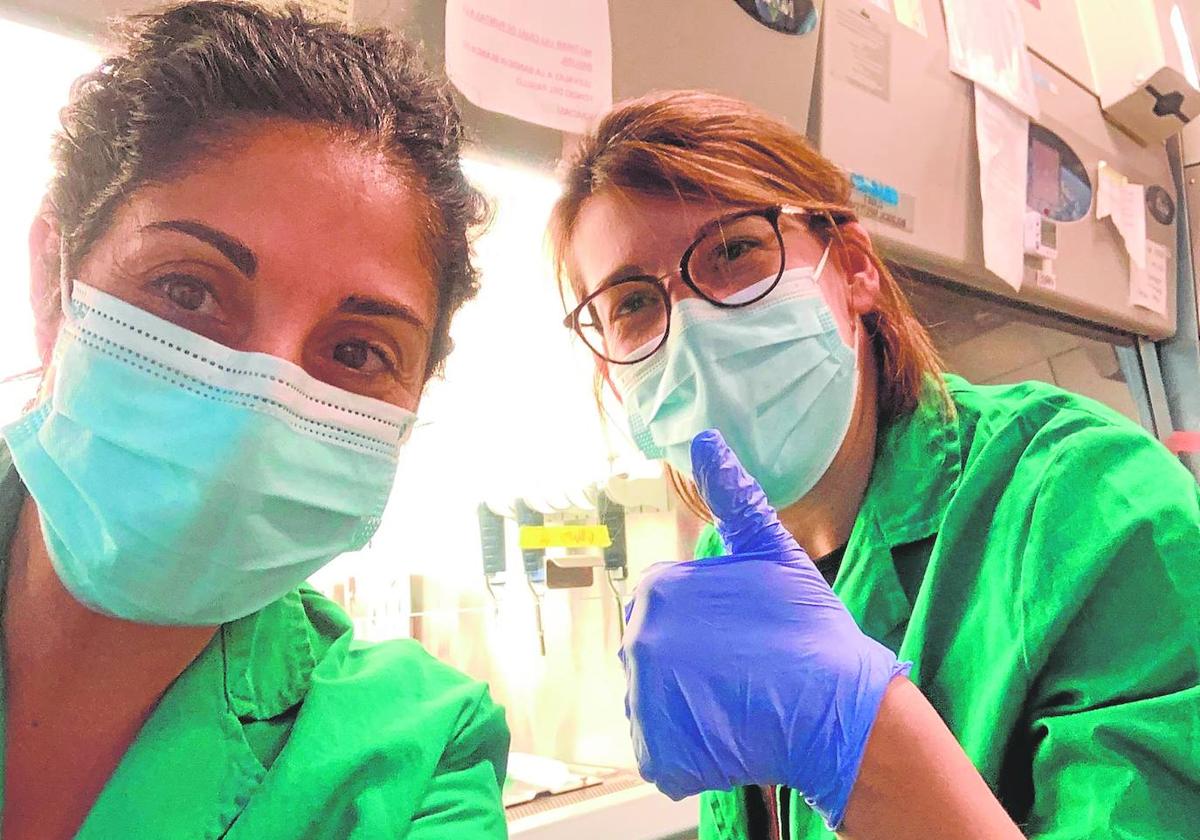Today there is no cure for acute pain caused by heart disease. Science estimates that 17 million people die from it every year. And it’s not on the way to abatement, because increasing life expectancy equates to a larger population of diseases that many in the past were spared because they weren’t around in time to experience them. “Its incidence increases dramatically in people over 65 years of age,” said Dr. from the Murcian Institute of Biosanitary Research (IMIB). Sonia Águila Martínez explains, author of ‘In Search of Healthy Aging: New Therapeutic Approaches to Combat Thrombin Inflammation.
With aging, an imbalance occurs between two closely linked systems, the hemostatic and the immune, which leads, in the words of the expert, to “a thrombotic state”. From there, as-yet-unknown processes are triggered, and Aguila Martínez’s project tries to unravel. Its aim is to “deepen the molecular mechanisms that drive these changes”, with a special focus on platelets. They are mainly the cells responsible for blood clot formation and “act as a bridge between hemostasis and immunity.”
Young and old
The ultimate ambition is to “develop new therapies capable of preventing this thromboinflammatory condition and, ultimately, fatal ischemic events”. How do you plan to achieve it? The solution involves using an animal model of aging mice, which allows the evolution and results to be verified, “in addition to samples from healthy, young and old volunteers.”
keys
-
More ailments
Increasing life expectancy is accompanied by conditions common to advanced age. -
is healthy
Research aims to make thrombin better fight inflammation in older adults. -
New treatments
The aim is to promote new treatments that ultimately prevent fatal ischemic events.
Although advances in medicine already “allow various anti-thrombotic and anti-platelet therapies to prevent the occurrence of these events, increasing life expectancy remains a challenge at the health and research level,” the expert says. Hence the opportunity and great potential of the project funded by the Seneca Foundation-Science and Technology Institute of the Region of Murcia.
Interest in studying the processes affecting aging populations has been prevalent for some time, “as life expectancy continues to increase, so does the prevalence of chronic diseases.” In this context, the research led by Dr. Aguila Martínez is part of a trend that is in full development. However, while there are already many studies focusing on delaying aging, what we are dealing with is an approach far from that premise.
Fewer illnesses
“In our case, what we are trying to do is to elucidate the mechanisms involved in the inflammation of thrombin in order to design new drugs that can prevent or reduce the subsequent changes and, finally, the appearance of thrombotic events, one of the most common events in the elderly population. .” The ultimate goal, he adds, “is so we can improve the quality of life.” In other words: while other scientists struggle to extend life, here we are talking about extending those extra years so that age-related diseases are as few as possible. Such an important issue cannot be limited to the project of one area of research. “There is always a lab somewhere in the world working on topics very similar to yours, and this case is no exception,” the doctor clarifies. “Although approaches and approaches to research may change, there is always something new to contribute, but there is a place for everyone.”
The approach in this project, at the level of studying the dynamics of the cell (metabolism) and small regulatory elements (mi-RNA), is “very innovative and gives us our own place in this field of research.”
Training the young to inspire the old
At the beginning of 2023, less than a year has passed since the work began, and covering three years, “although an investigation in science is not completely closed, there are always things to discover,” explains its lead researcher Dr. Sonia Aguila Martinez. For now, “we already have very interesting results in a mouse model that indicate clear differences in platelet response with age, and encourage us to continue this work.” These first signs already point to the contribution of a group of researchers to the noble goal of adding a few more years to life, which science has already been extending for a few years, giving them the strength to continue. “We are very happy,” the expert admits. The group includes experts from the Hematology and Clinical Experimental Oncology Research Group of the University of Murcia (UMU), located in the Regional Hemodonation Center located at the Morales Meseguer Hospital’s Hematology Service and the Murcian Institute for Biosanitary Research. (IMIP) among them are biologists, chemists and pathological anatomy technicians, as well as external collaborators from other research groups in the United States and Spain.
Águila Martínez argues that the work they are carrying out, thanks to funding from the Seneca Foundation, “will not only help to solve the unknowns of aging and thrombosis, which we believe will have consequences on the quality of life of patients; but will also have an impact on the establishment of this line of research in the region of Murcia”. At the same time, he adds, it will contribute to the “training of younger members of the team.”

